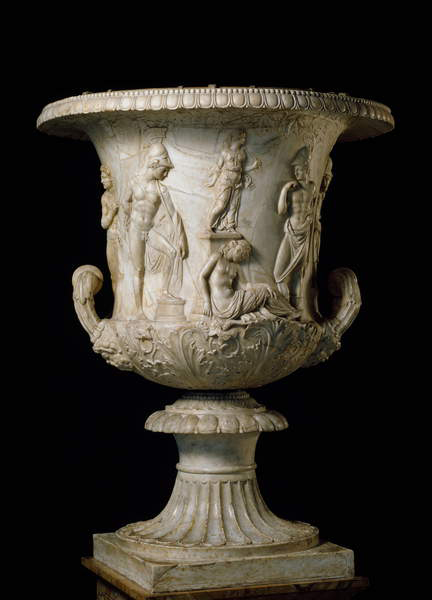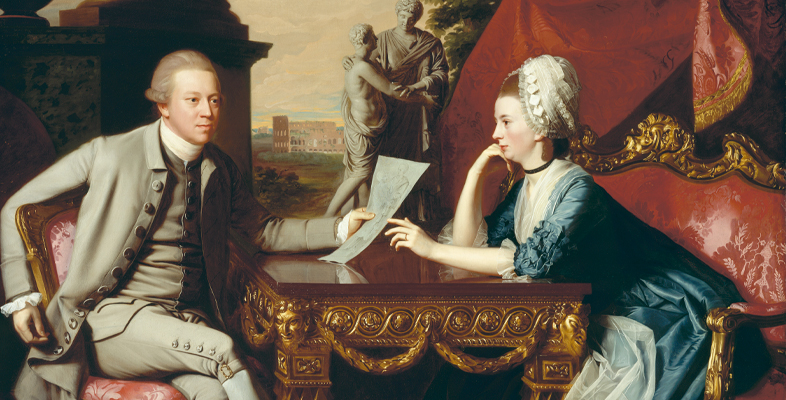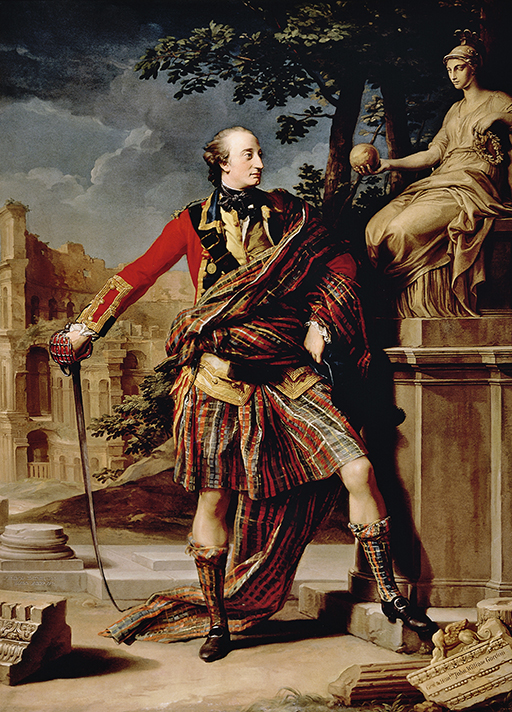2.3 The Grand Tour portrait: people and professions
You are now going to have a go at analysing another Grand Tour portrait by Batoni, using the example of Batoni’s portrait of Page-Turner that you looked at as a guide.
Activity 5
Look at Figure 7 and jot down your thoughts about its scale (use the caption information to help you), the setting, as well as the figure’s pose, gesture, expression and the colours used. Don’t worry about trying to identify all the objects, just note any that you think might be significant.
Discussion
This portrait is on a much larger scale than the one of Page-Turner. However, like Batoni’s portrayal of Page-Turner, the figure is set against a network of vertical and horizontal lines made up by architectural shapes. These are created by the plinth on which the sculpture of the female figure sits and the setting of antique remains, but there are also diagonals in the architectural fragments at the figure’s feet. This geometric effect is softened by the inclusion of trees and foliage that appear stretched behind and above the figure, again creating the illusion that the picture carries on beyond the canvas edges. The figure is depicted full length, posed with one foot raised above the other, one hand on hip, the other stretched out to hold a sword, and wearing a determined expression. It’s also brightly lit, showing off the colours of his military uniform, tartan plaid and socks.
Like Page-Turner, Batoni painted Colonel Gordon (1736–1816) while he was on the Grand Tour, but Gordon’s portrait is not just that of a tourist since it brings the culture of ancient Rome into direct contact with his profession. Gordon is shown as an active figure, wearing the uniform of the 105th Regiment of Foot and grasping the sword he used as a threat to quash a revolt in the Houses of Parliament in 1780. However, he is also surrounded by ancient remains, including the Colosseum, and his tartan is draped in folds that recall those of a toga . The importance of place and military victory is reinforced in the orb and laurel wreath he appears to receive from Roma, the goddess of Rome, who is depicted in the statue.

Other professional men also saw the benefits of Grand Tour portraiture. One example was the architect James Adam (1732–1794), whose practice back home in Britain with his brother Robert was to enjoy huge success. The brothers designed country and town houses in a neo-classical style, that is one which reinvented the public architecture of ancient Rome by adapting its proportions and material forms such as domes and pillars. Antonio Zucchi’s portrait of James Adam was painted in the final year of Adam’s Grand Tour of 1760–63 (Figure 8). Almost overwhelmed by the huge marble urn to his right (known as the Medici vase, Figure 9), and with a figure of Minerva behind him, Zucchi shows Adam in a three-quarter length pose. The architect is depicted extravagantly dressed (like Page-Turner) but this is evidently winter, as he is draped in a fur-trimmed robe. Adam grips dividers in one hand, a rolled plan in the other. Zucchi signifies that although Adam might be dressed like one of his aristocratic clients, he is an architect, and one steeped in the classical knowledge necessary to his profession: the capital on which Adam’s left hand rests was his own design.


